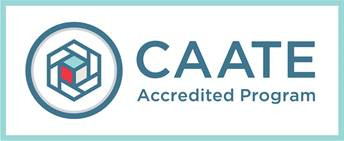UVM's Athletic Training program equips students with the knowledge and skills needed to work with physicians and other health care professionals in the prevention, treatment, and rehabilitation of injuries incurred by athletes and others engaged in physical activity.
Athletic Training students benefit from diverse clinical experiences, interdisciplinary study in direct association with The University of Vermont Medical Center and The Larner College of Medicine's Department of Orthopaedics and Rehabilitation, and individual attention. Athletic Training students observe sports practices and games beginning in the first semester to become acquainted with the routines of campus athletic training staff, and gain a minimum of 800 clinical experience hours with a clinical mentor over the course of the four-year Athletic Training program.
*The UVM Athletic Training Program is no longer accepting applicants for the undergraduate degree. The Master of Science in Athletic Training (MSAT) program in the Department of Rehabilitation and Movement Sciences at UVM will be halting admissions of new students at the current time. Our faculty, administration, and support personnel have worked diligently over the past few years to transition from an undergraduate degree to an entry level Masters degree, in order to comply with the 2020 Standards for Accreditation of Professional Athletic Training Education Programs, as mandated by the Commission on Accreditation of Athletic Training Education (CAATE). Despite these efforts, considering both institutional data as well as the changing landscape in higher education as we navigate historically unprecedented challenges in our country, we will be halting admissions for up to five years. During this time, our MSAT program and University leadership will continue to explore potential reactivation of the program if economic and academic factors will allow. While this is a difficult and disappointing decision to make, we continue to remain optimistic that there will be avenues which will allow continuation of this program in the future. Thank you for your ongoing support of the Athletic Training program at UVM.
Curriculum
An integrated curriculum combines study in anatomy and physiology, nutrition, and rehabilitation and movement science with specialty courses in athletic training. View Athletic Training curriculum >>
Clinical Experience
The University of Vermont's clinical affiliations with collegiate and high school sports teams, outpatient orthopedic rehabilitation clinics, and The Larner College of Medicine directly involve Athletic Training students with patients and athletes, parents, coaches and administrators; and offer interactions with athletic trainers and other health care professionals. These connections also provide opportunities to observe surgery and conduct faculty-mentored research.
First-year Athletic Training students undertake 50 hours of directed observation of sports practices and games while enrolled in Athletic Training (AT) 168. During this time they become acquainted with the daily routines of the athletic training staff on campus and engage with upper-level students in the program. Upon meeting retention and promotion requirements, students matriculate into the "clinical portion" of the program in their second year, where they are assigned to a different clinical preceptor each semester at both on- and off-campus clinical sites.
Program Requirements
Students must meet the following criteria to participate in and progress through the clinical portion of the program:
- Minimum cumulative 3.0 GPA (First-year Athletic Training students must reach this standard by the end of the spring semester.)
- Minimum cumulative 3.0 GPA in Athletic Training Program core courses (As noted on curriculum sheet >>)
- Satisfactory performance in clinical experience courses (Repeated unsatisfactory performance in a clinical experience course will result in discontinuation from the Athletic Training Program and/or the student not being endorsed for the BOC certification exam.)View additional program policies >>
Additional fees: There are costs associated with being enrolled in the program. These include but are not limited to: lab fees, personal liability insurance, immunization maintenance, apparel to adhere to dress code(s), and travel to and from off-campus clinical assignments and internships. View current costs (PDF) >>
Student Outcomes
| 2017-2018 | 2018-2019 | 2019-2020 | 3 yr aggregate | |
| Number of students graduating from program. | 14 | 14 | 13 | 41 |
| Number of students graduating from program who took examination. | 13 | 12 | 12 | 37 |
| Number of students who passed the examination on the first attempt. | 10 | 12 | 10 | 32 |
| Percentage of students who passed the examination on the first attempt. | 77 | 100 | 83 | 86 |
| Number of students who passed the examination regardless of the number of attempts. | 12 | 12 | 11 | 35 |
| Percentage of students who passed the examination regardless of the number of attempts. | 92 | 100 | 92 | 95 |
| 2017-2018 | 2018-2019 | 2019-2020 | 3 yr aggregate | |
| Number of students graduating from program | 14 | 14 | 13 | 41 |
| Student graduation rate (%) | 93 | 78 | 72 | 80 |
| Graduation Year | 2017-2018 | 2018-2019 | 2019-2020 | 3 yr aggregate |
| Number of students beginning program (cohort number) | 15 | 19 | 18 | 52 |
| Number of students returning for subsequent year 2 | 15 | 18 | 14 | 47 |
| Program retention rate (%) | 100 | 95 | 78 | 91 |
| Number of students returning for subsequent year 3 (if applicable) | 15 | 14 | 14 | 43 |
| Program retention rate (%) | 100 | 78 | 100 | 93 |
| Number of students returning for subsequent year 4 (if applicable) | 14 | 14 | 14 | 42 |
| Program retention rate (%) | 93 | 100 | 100 | 98 |
*Retention rate as defined by the CAATE as the percentage of a program's admitted students who continue in the program in the next year.
| 2017-2018 | 2018-2019 | 2019-2020 | 3 yr aggregate | |
| Number of students Employed as AT | 11 | 9 | 9 | 29 |
| Student Employment/Placement Rate as AT (%) | 79 | 69 | 75 | 74 |
| Number of students employed as other | 2 | 2 | 0 | 4 |
| Student Employment/Placement Rate as other (%) | 14 | 15 | 0 | 10 |
| Number of students not employed | 1 | 2 | 3 | 6 |
Student Not Employed Rate (%) | 7 | 15 | 25 | 15 |
Graduate employment/placement rate: Percentage of students within 6-months of graduation that have obtained positions in the following categories: employed as an athletic trainer, employed as other, and not employed. Employment/Placement rate is calculated as: the sum of students with a Employed as an Athletic Trainer or Employed as an Athletic Trainer and in a degree or residency program then dviided by the total number of students who have graduated (excluding students with a Not Employed, due to military service or Deceased).
Accreditation

The University of Vermont's Athletic Training Program has been re-accredited for the period 2018-2028 by the Commission on Accreditation of Athletic Training Education (CAATE), 6850 Austin Center Blvd., Suite 100, Austin, TX 78731-3101. Phone: (512) 733-9700; Email:caate@sbcglobal.net. Graduates of the Athletic Training Program are eligible to sit for the CAATE Board of Certification (BOC) examination. The Office of Professional Regulation in the Vermont Secretary of State's office governs Vermont licensure requirements. View licensure requirements by state.










